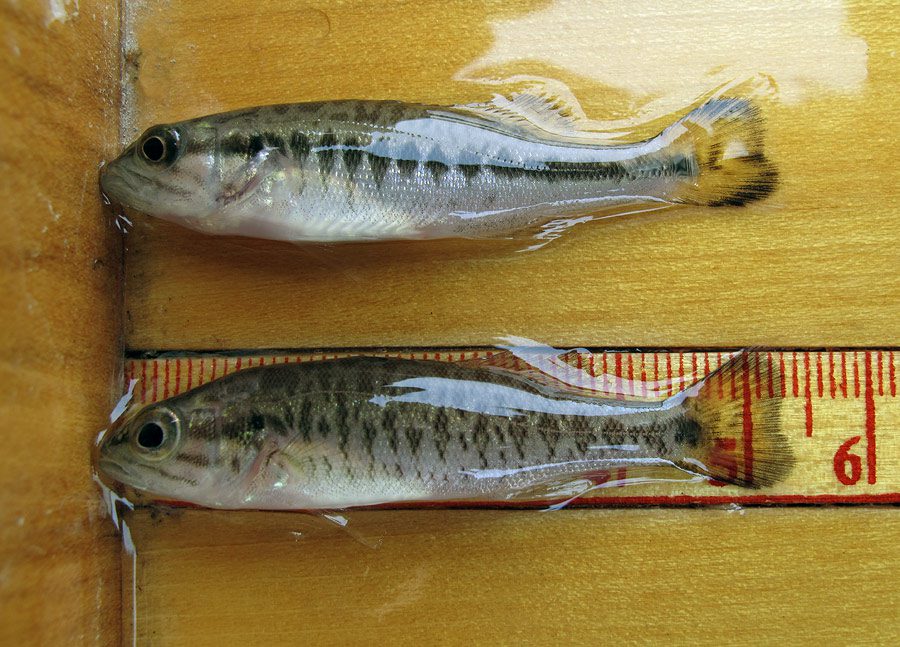Friday March 18, 2011
It’s easy to think that with such different spotting patterns, the two juvenile black bass (genus Micropterus) in the photo above must be separate species, but when it comes to black bass identification, the differentiation is not so easy. Spotted bass (Micropterus punctulatus) look similar to largemouth bass (M. salmoides), but are more closely related to smallmouth bass (M. dolomieu). Spotted bass are known for introgressive hybridization (a complex mixture of genes formed by movement of a gene from one species into the gene pool of another with repeated backcrossing) with smallmouth bass (Moyle 2002; Scribner 2001). To confound lineages even further, redeye bass (M. coosae), also present in parts of California, are know to hybridize with smallmouth bass and spotted bass, therefore it is reasonable to suspect that morphological characteristics overlap among spotted bass, redeye bass, and smallmouth bass. So, identifying the two fish above should be no problem, right?
Juvenile black bass can be especially challenging to identify because characteristics that are obvious on adults (e.g. jaw bone, fin structure, scale size) are not applicable to juveniles. We have found the key above, produced by the U.S. Fish and Wildlife Service, is the most useful for identifying juvenile black bass in our region. By using the key above, the fish in the top of the photo should be a spotted bass, and the fish in the bottom of the photo appears to be a redeye bass, but without genetic confirmation this is only an educated guess.
Photo source: FISHBIO


